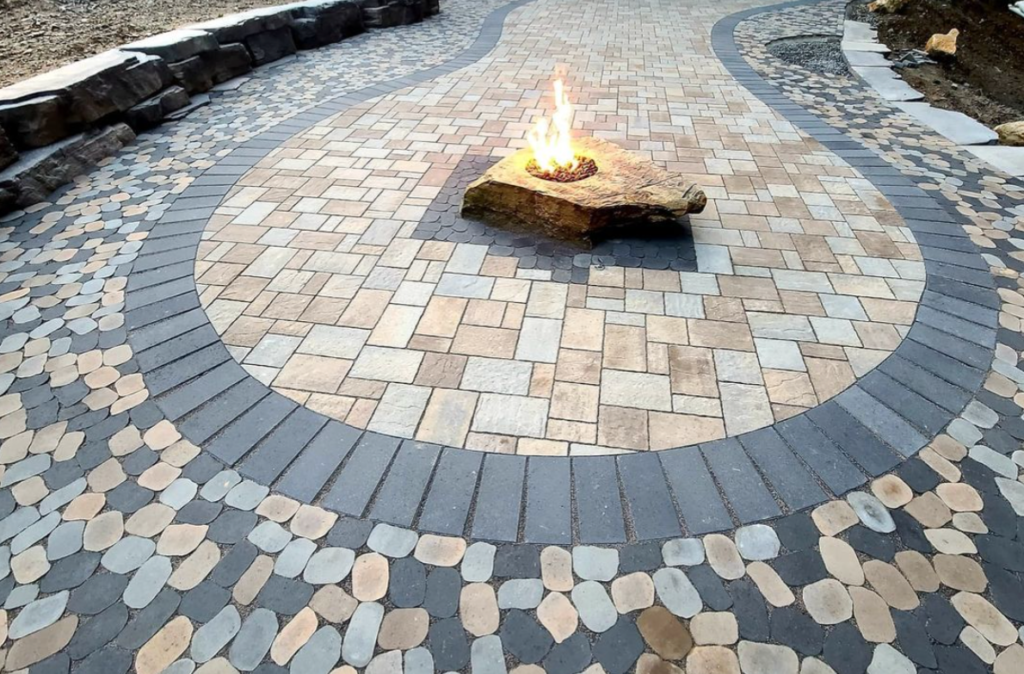
“Hardscaping” is a relatively new word that’s used when talking about landscaping. It’s usually used when referencing a patio, walkway, wall, pool decking or driveway. It can also be used when discussing a deck, pavillion or roof structure, an outdoor kitchen or fire feature.
Hardscaping usually incorporates natural stone, brick pavers, clay brick, concrete, decorative gravel, wood or composite decking.
When combined with other landcaping elements such as; landscape lighting, plants, outdoor audio, water features and cooking areas, hardscaping is the perfect way to add a peaceful and calming outdoor gathering space to your landscape.
Check out some of our Hardscape projects below
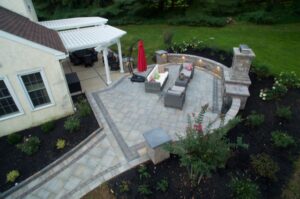
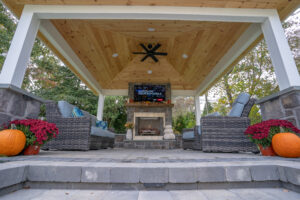

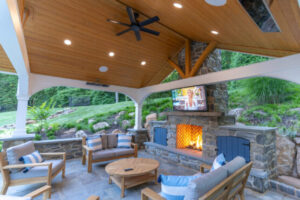


Here are a few important things to keep in mind when having a hardscape project done.
Whether it’s a deck, patio, wall, driveway, pavillion or fireplace, the most important part of any hardscape is a well engineered base.
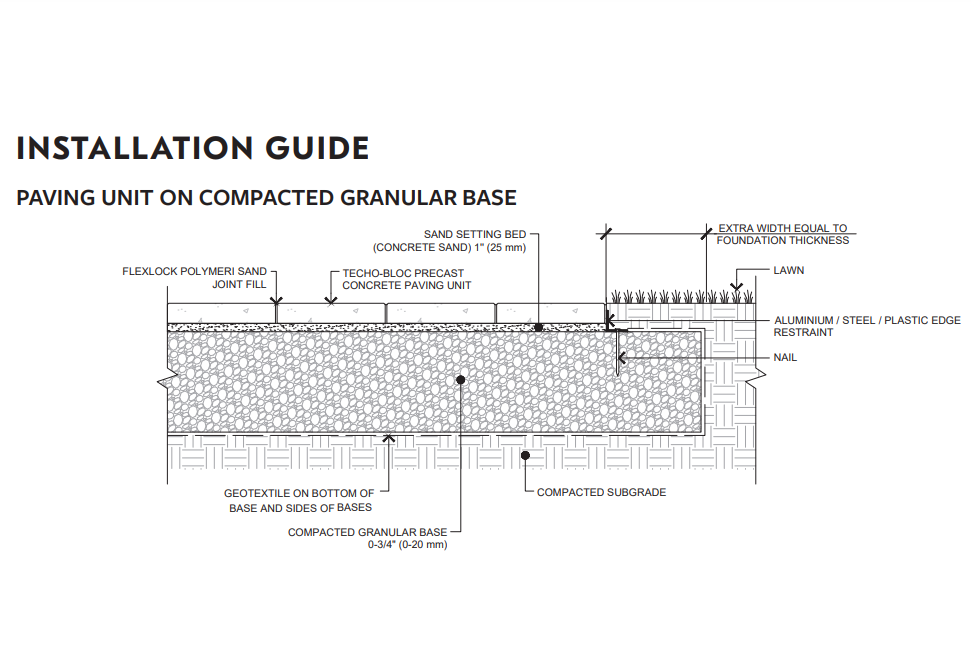
- Wet laid or dry laid (natural stone applications)
- Open grade or dense grade (interlocking applications)
- Concrete slabs and footings (wall, deck, pavillion, kitchen, fireplace applications)
- Woven and non-woven textile fabrics (interlocking applications)
- Uniaxial, biaxial and triaxial geo-grid (interlocking applications)
- Proper drainage, pitch and compaction (any and all hardscape applications)
The pattern and layout of stone, brick, wood or composite materials on your hardscape, makes them look better while adding to its strength.
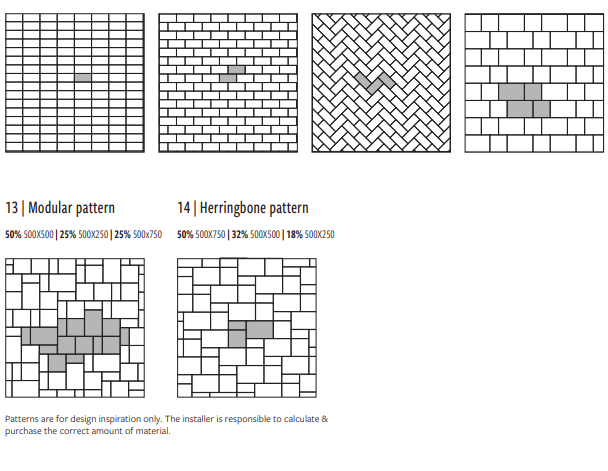
- Avoid lines longer than 5 feet in random patterns (all flat applications)
- Running bond patterns should not be used for driveways (any application)
- Walls should not have 45 degree angles (dry laid applications)
- Corner stones must be used for all walls (paver, brick and stone veneer applications)
- Avoid matching vertical seams (all wall applications)
- Avoid small cuts on outside perimeters (all dry laid applications)

